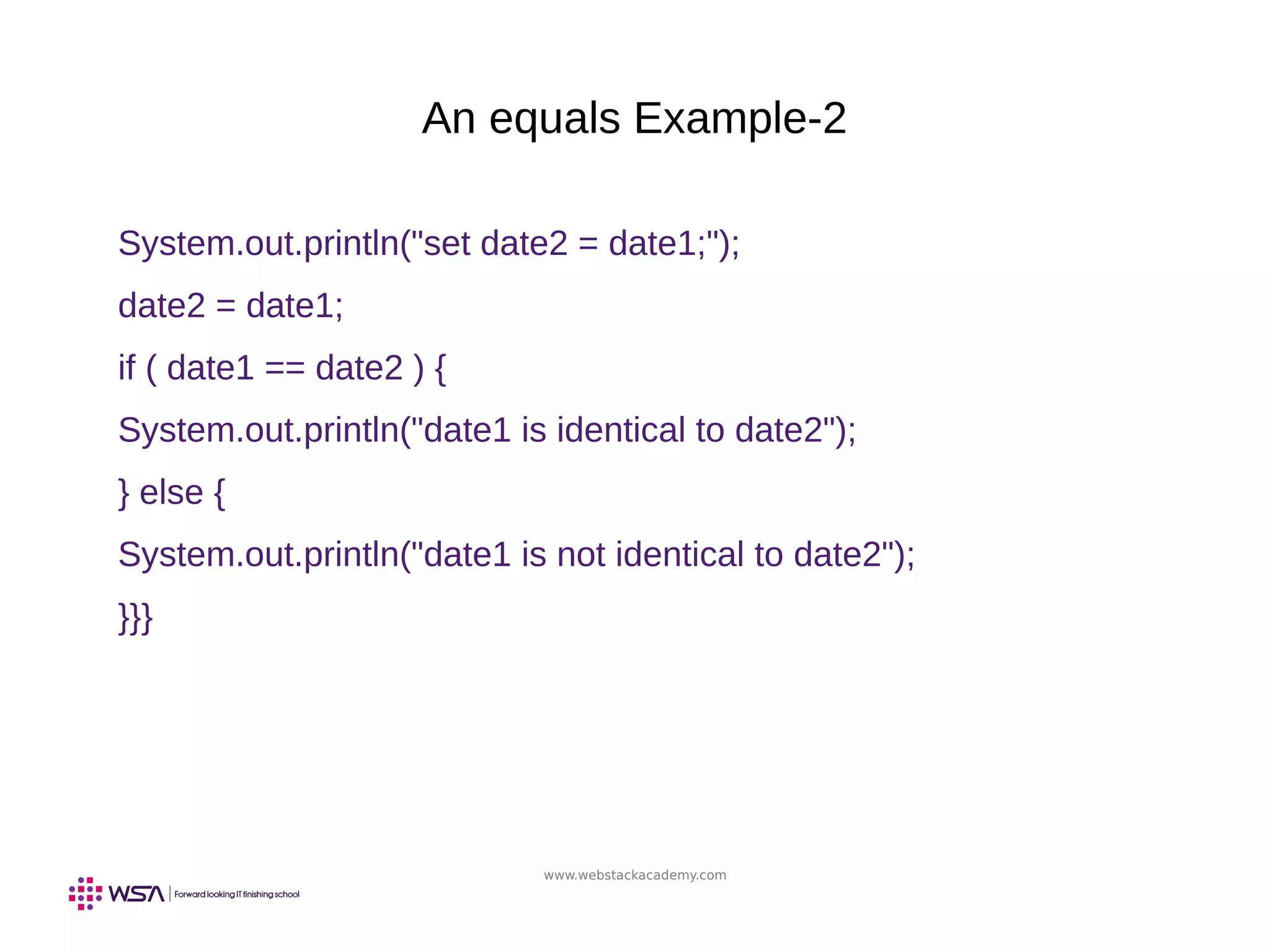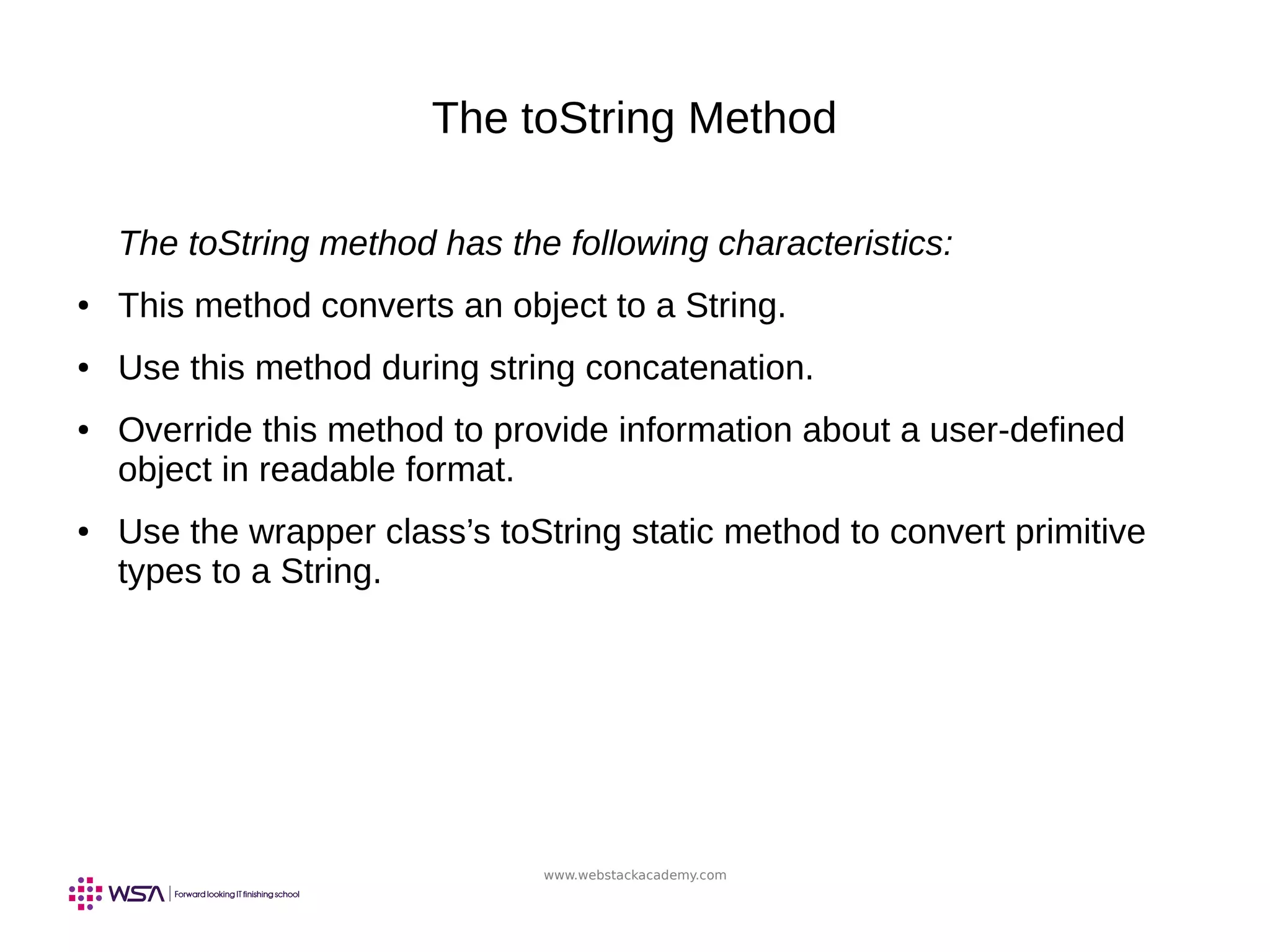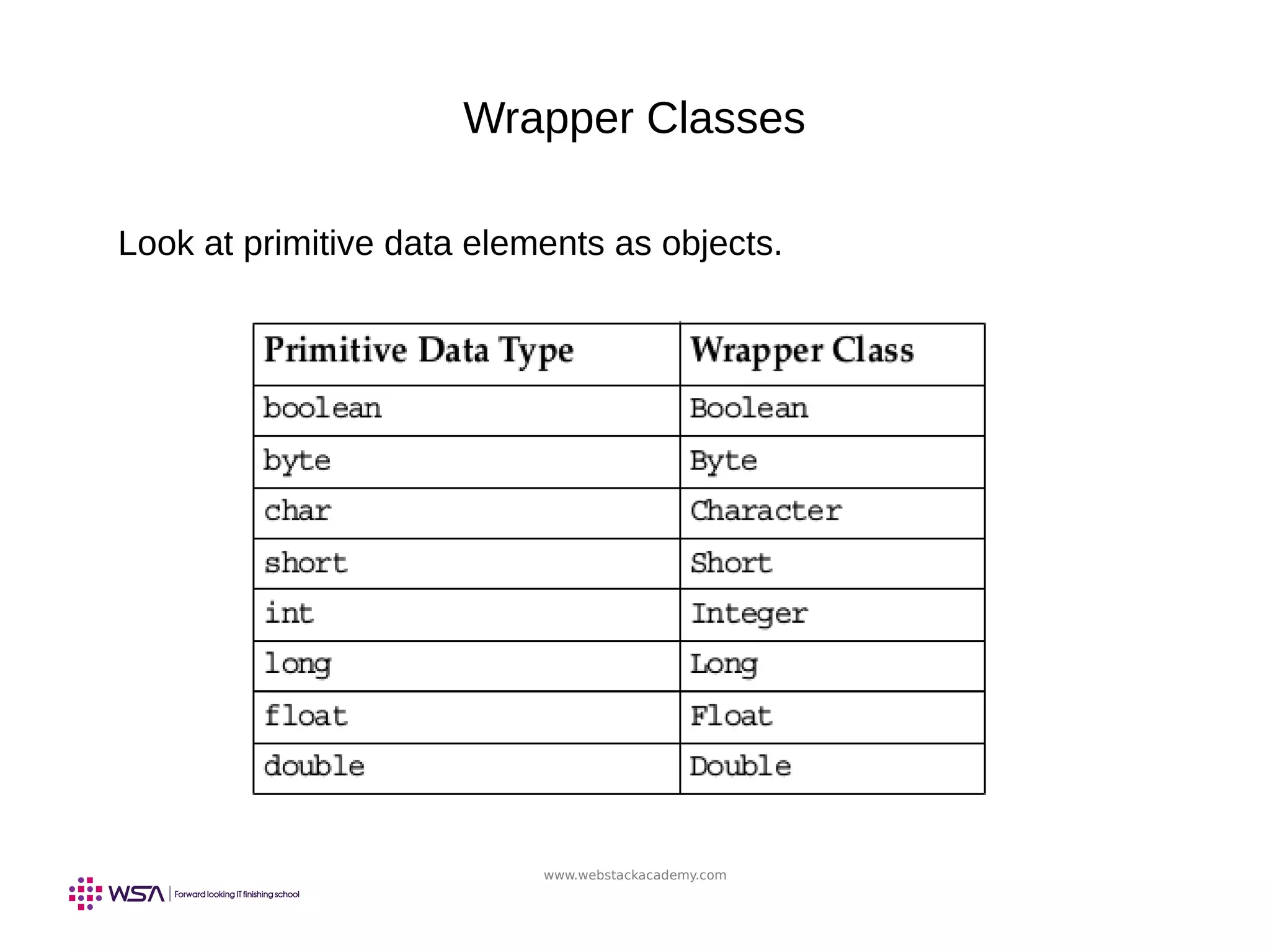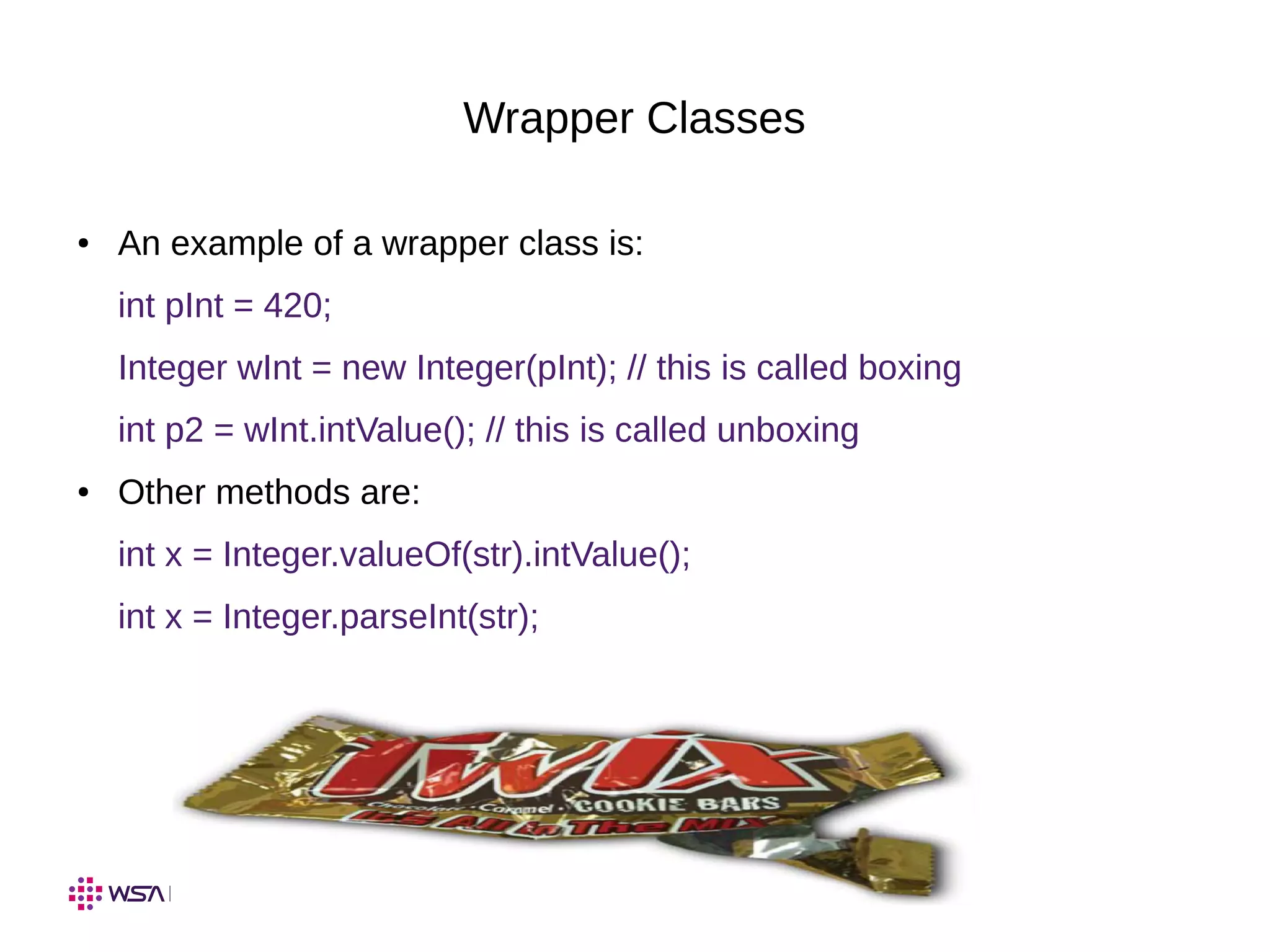The document outlines key concepts in Java programming, specifically focusing on object-oriented features such as inheritance, polymorphism, method overloading, and overriding. It demonstrates class design principles, including access modifiers, collection types, and the use of the 'super' keyword for method invocation. Additionally, it covers constructor behavior, equality checks, and the autoboxing of primitive types.
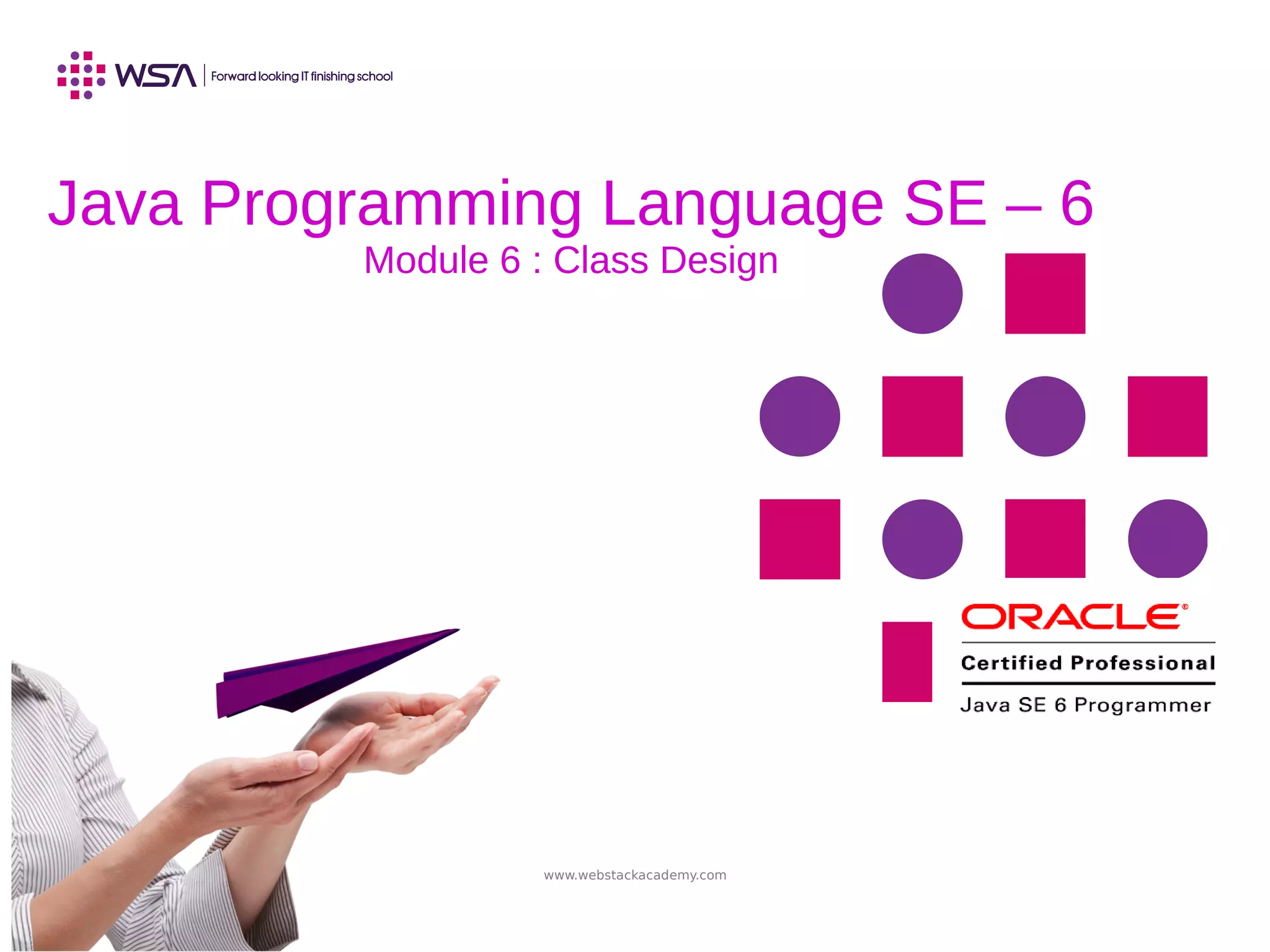

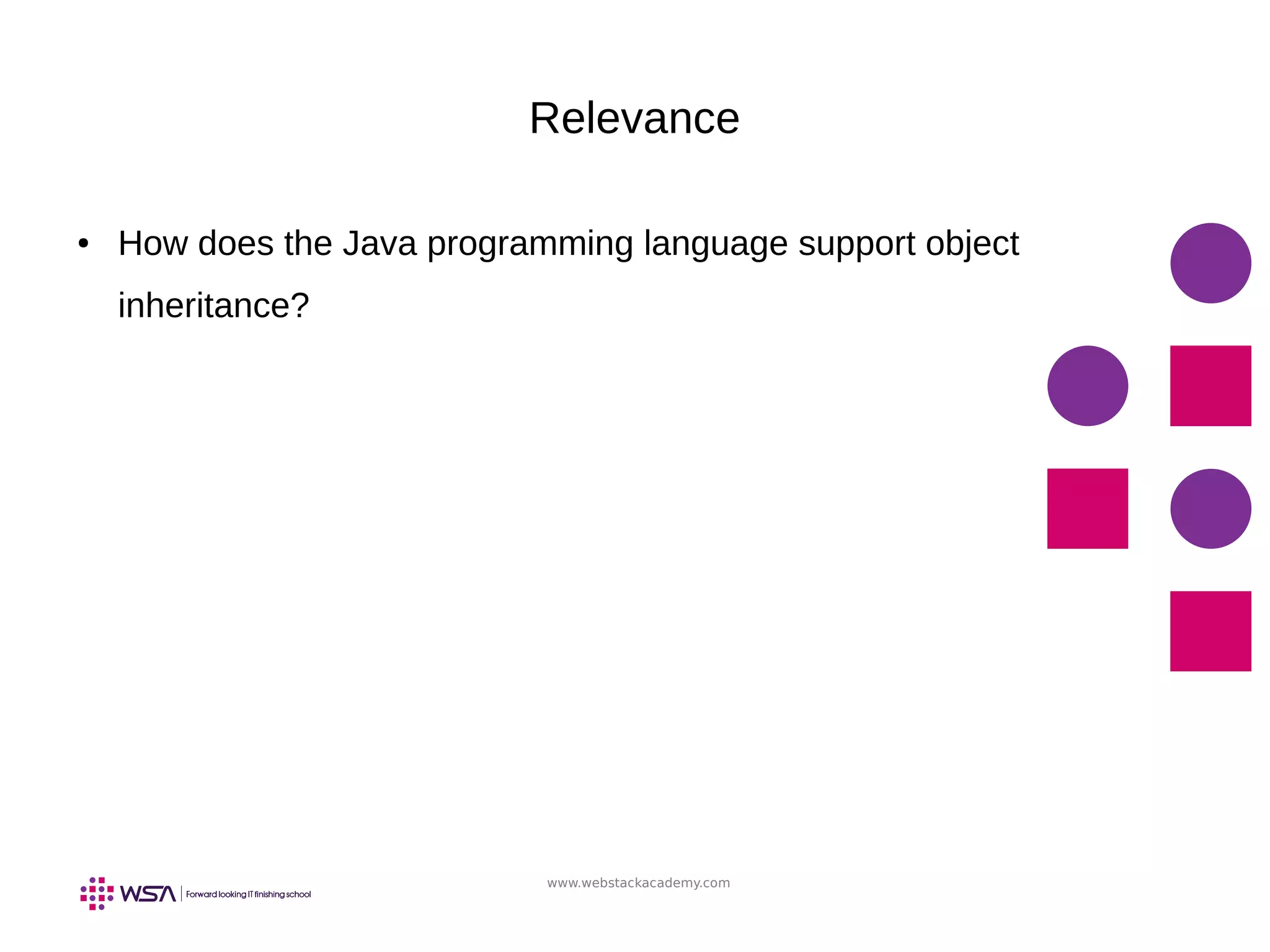


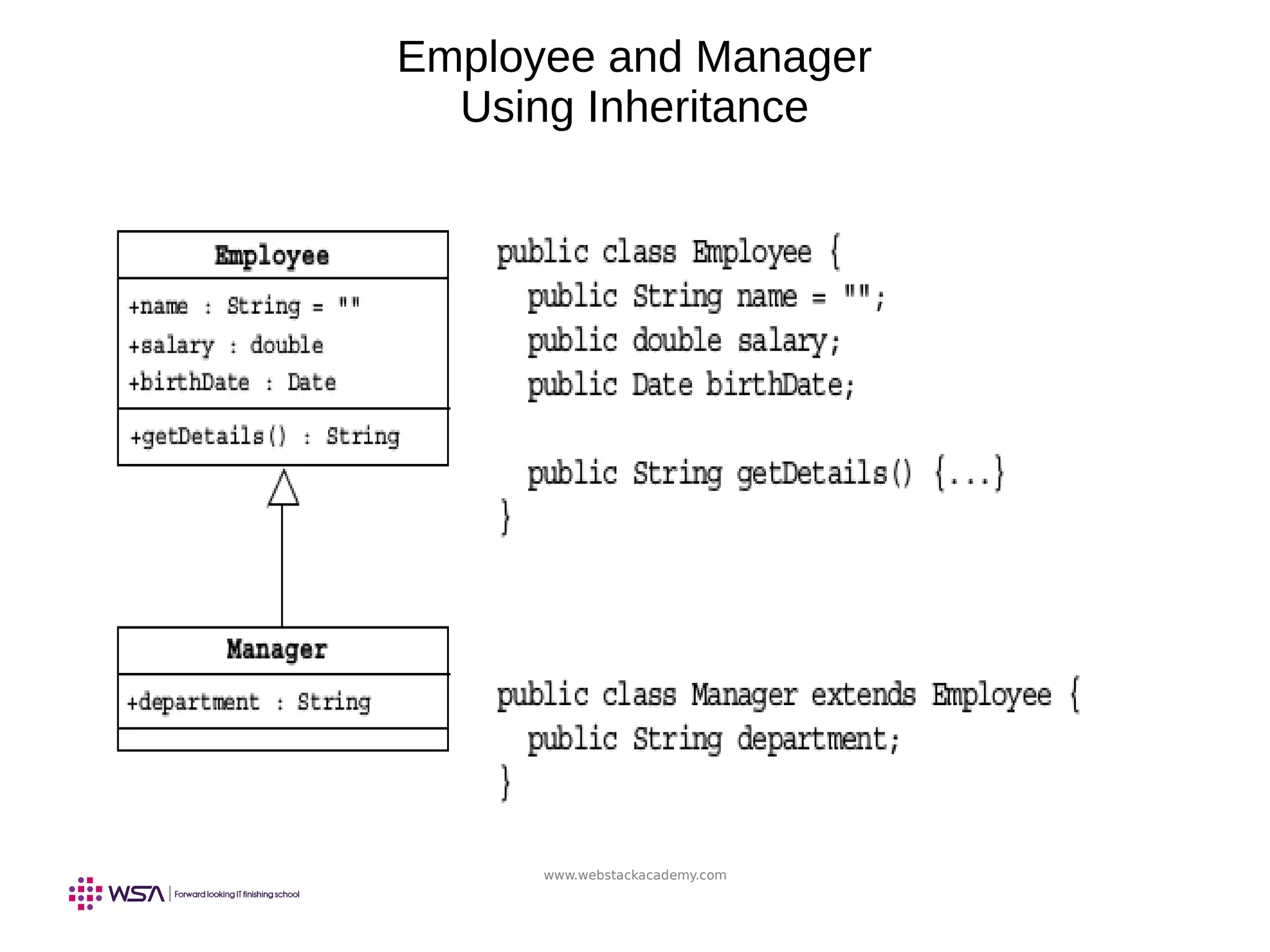
![www.webstackacademy.com
Single Inheritance
● When a class inherits from only one class, it is called
single inheritance.
● Interfaces provide the benefits of multiple inheritance
without drawbacks.
● Syntax of a Java class is as follows:
<modifier> class <name> [extends <superclass>] {
<declaration>*
}](https://image.slidesharecdn.com/006javaseclassdesign-190430060457/75/Core-Java-Programming-Language-JSE-Chapter-VI-Class-Design-7-2048.jpg)
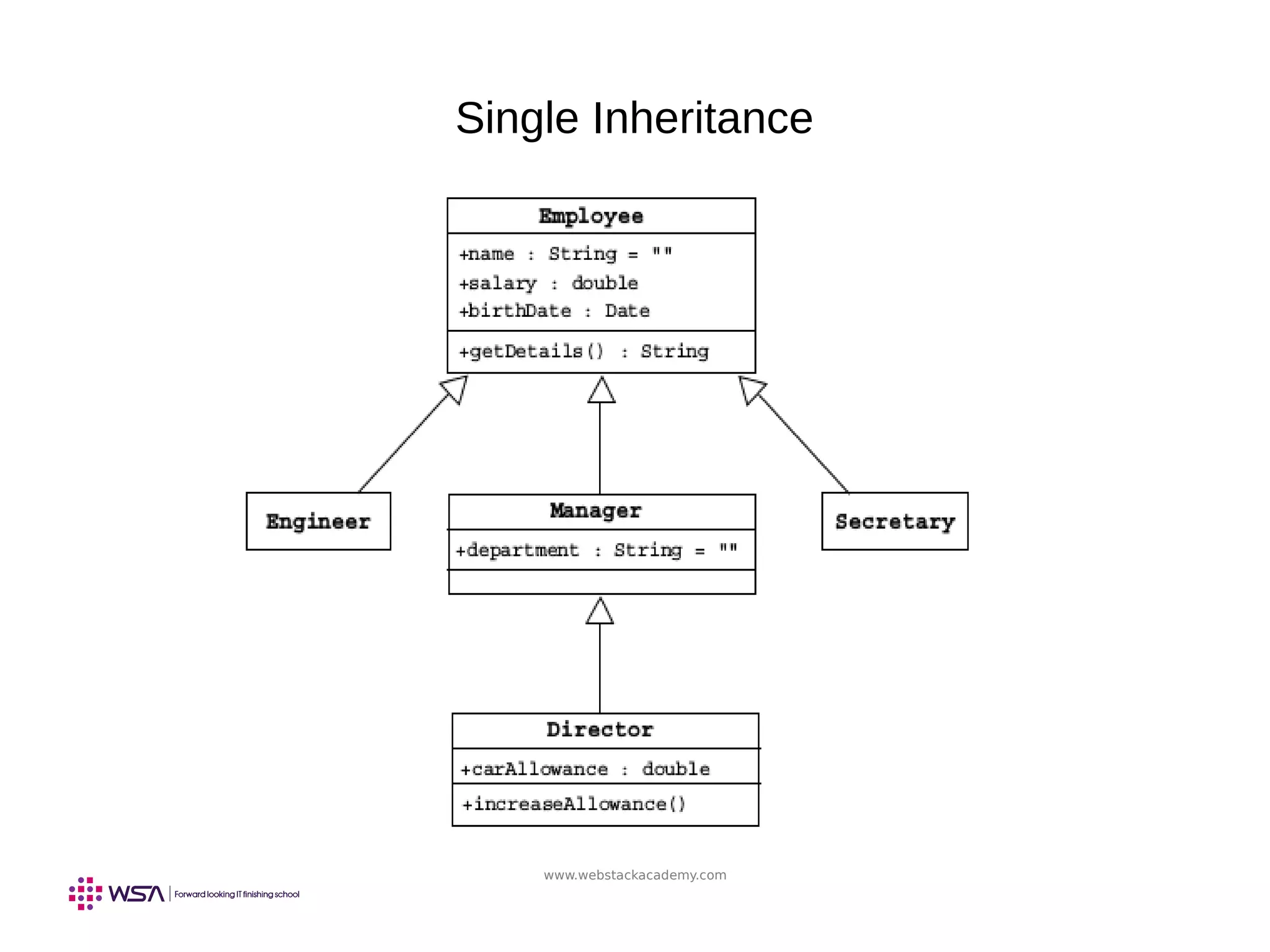
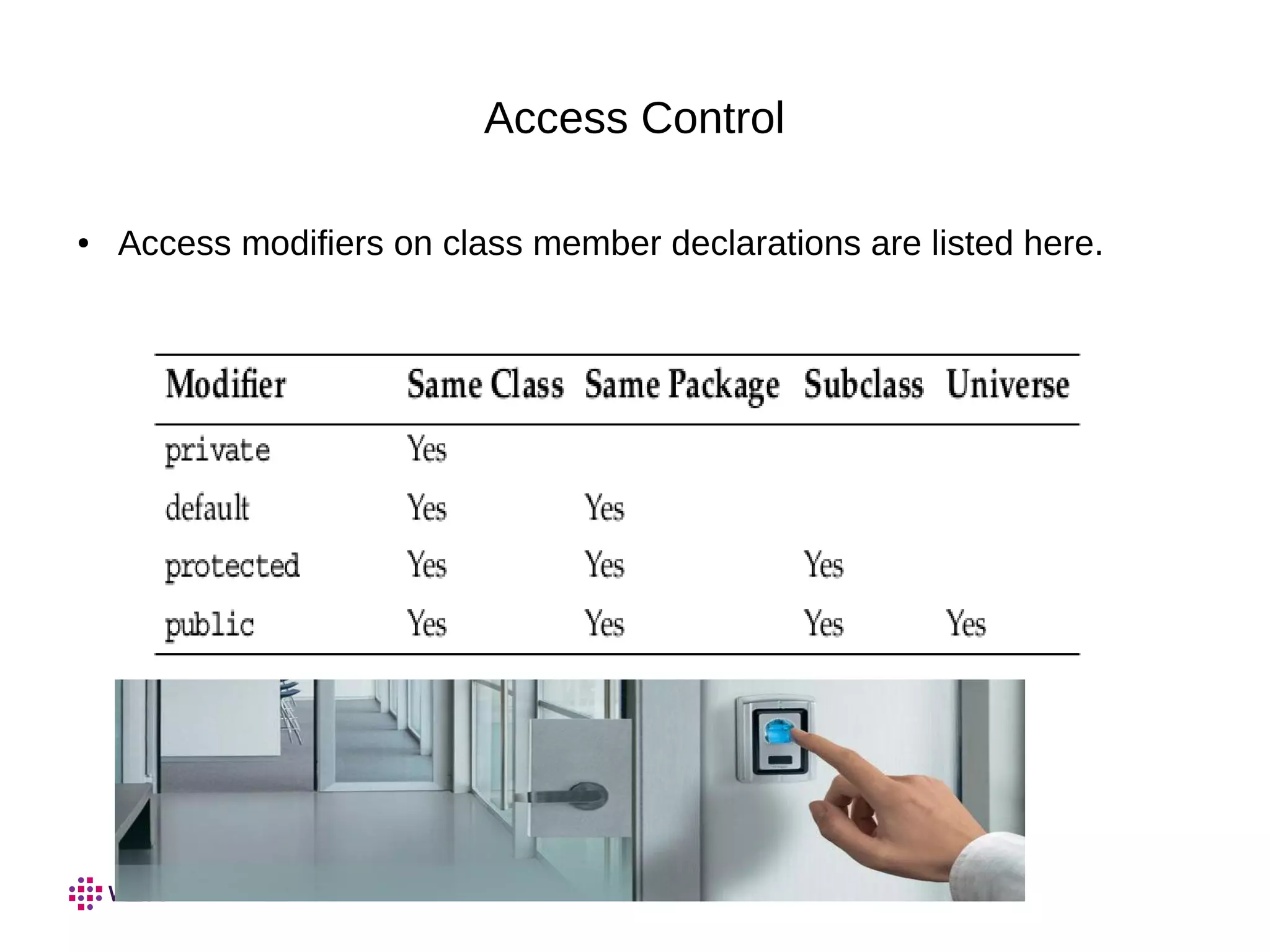
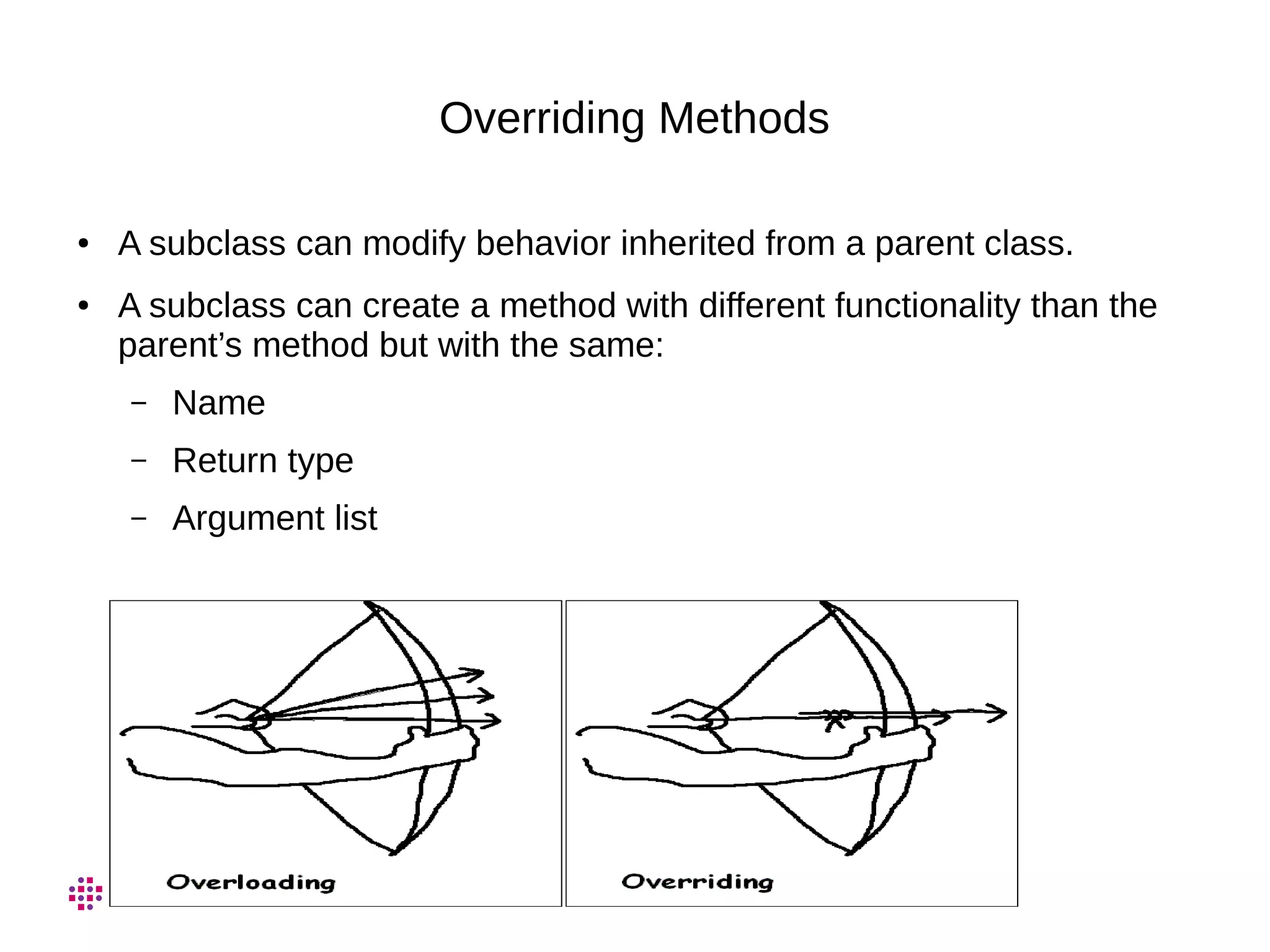
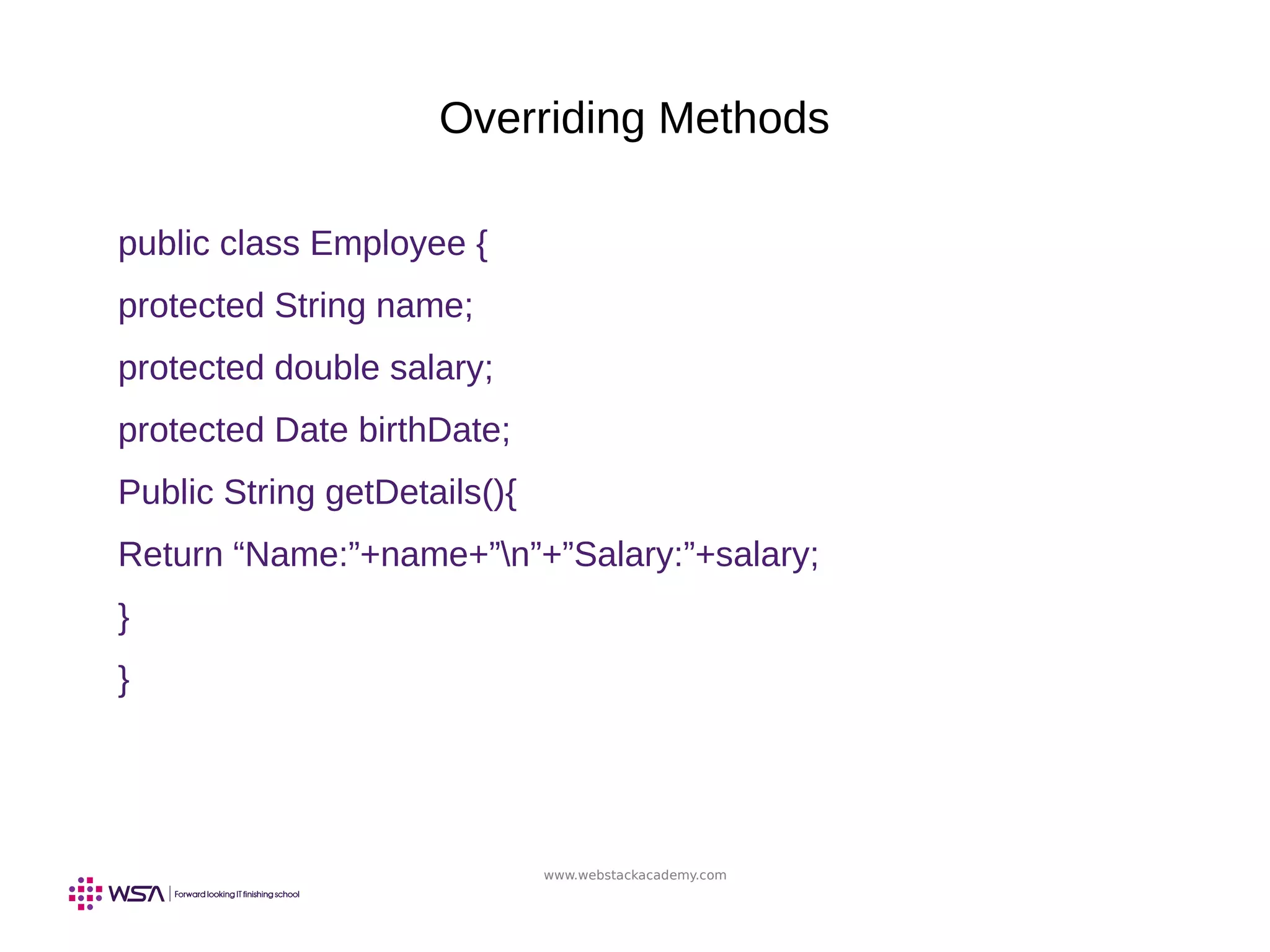

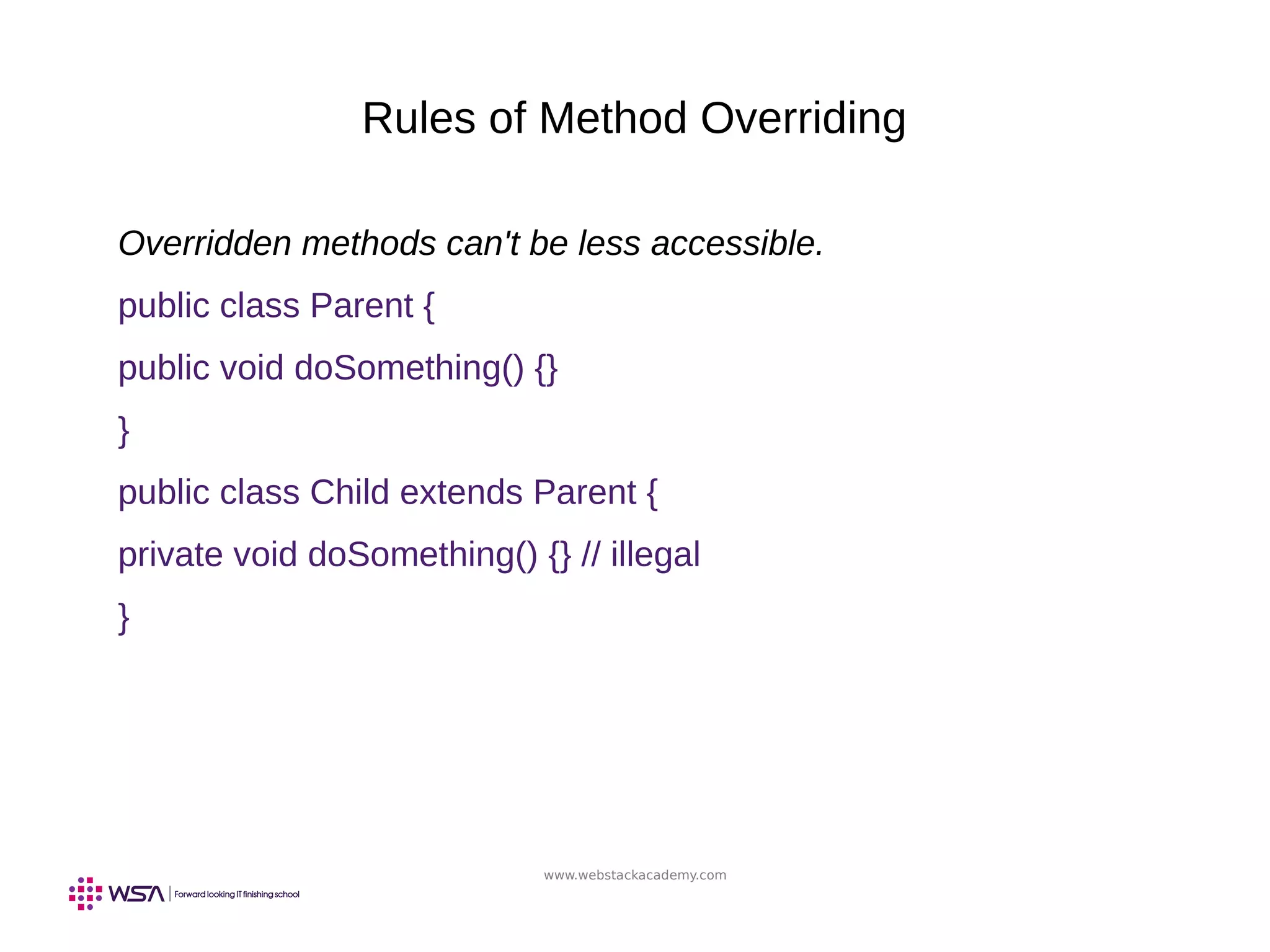

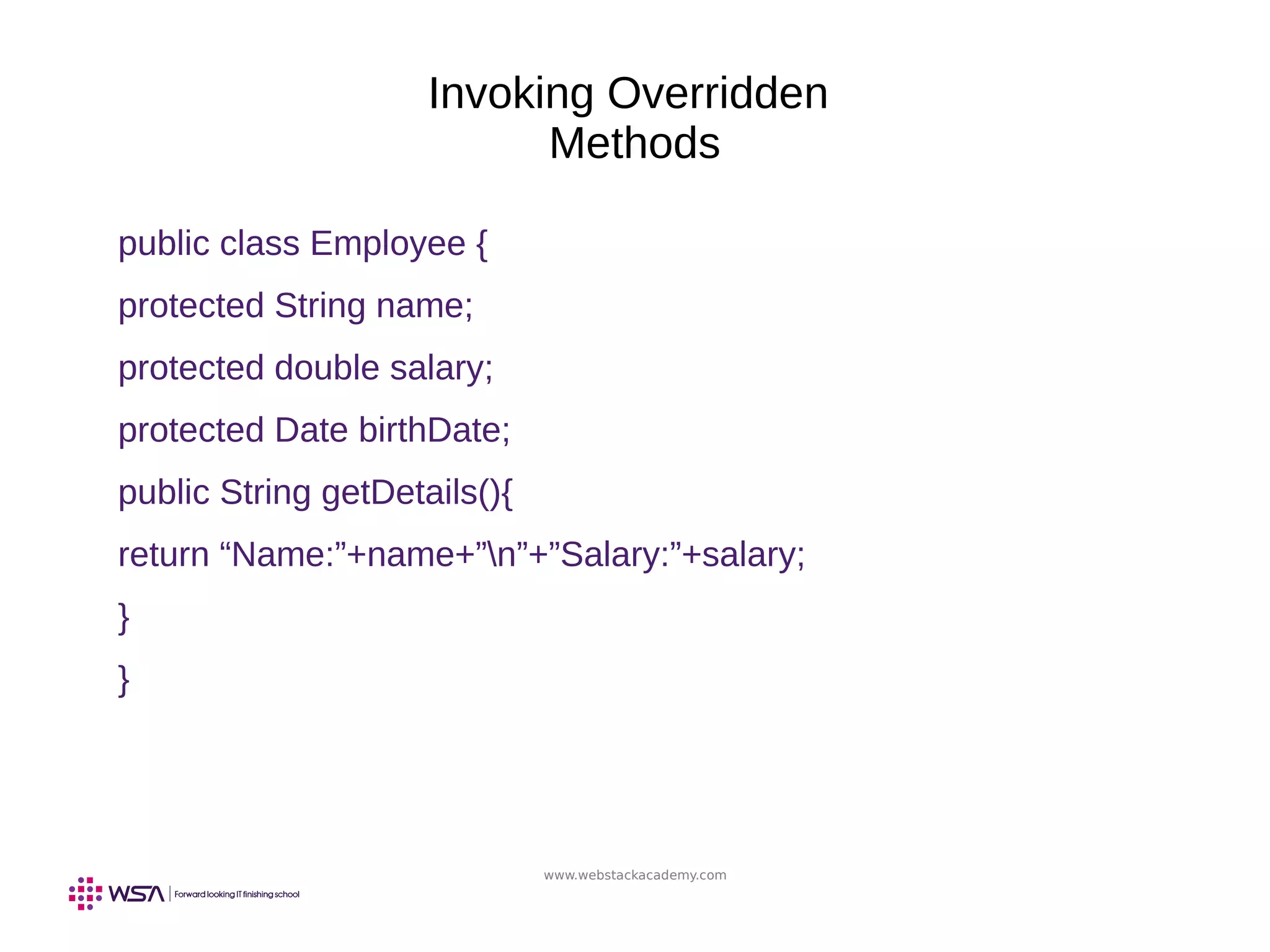
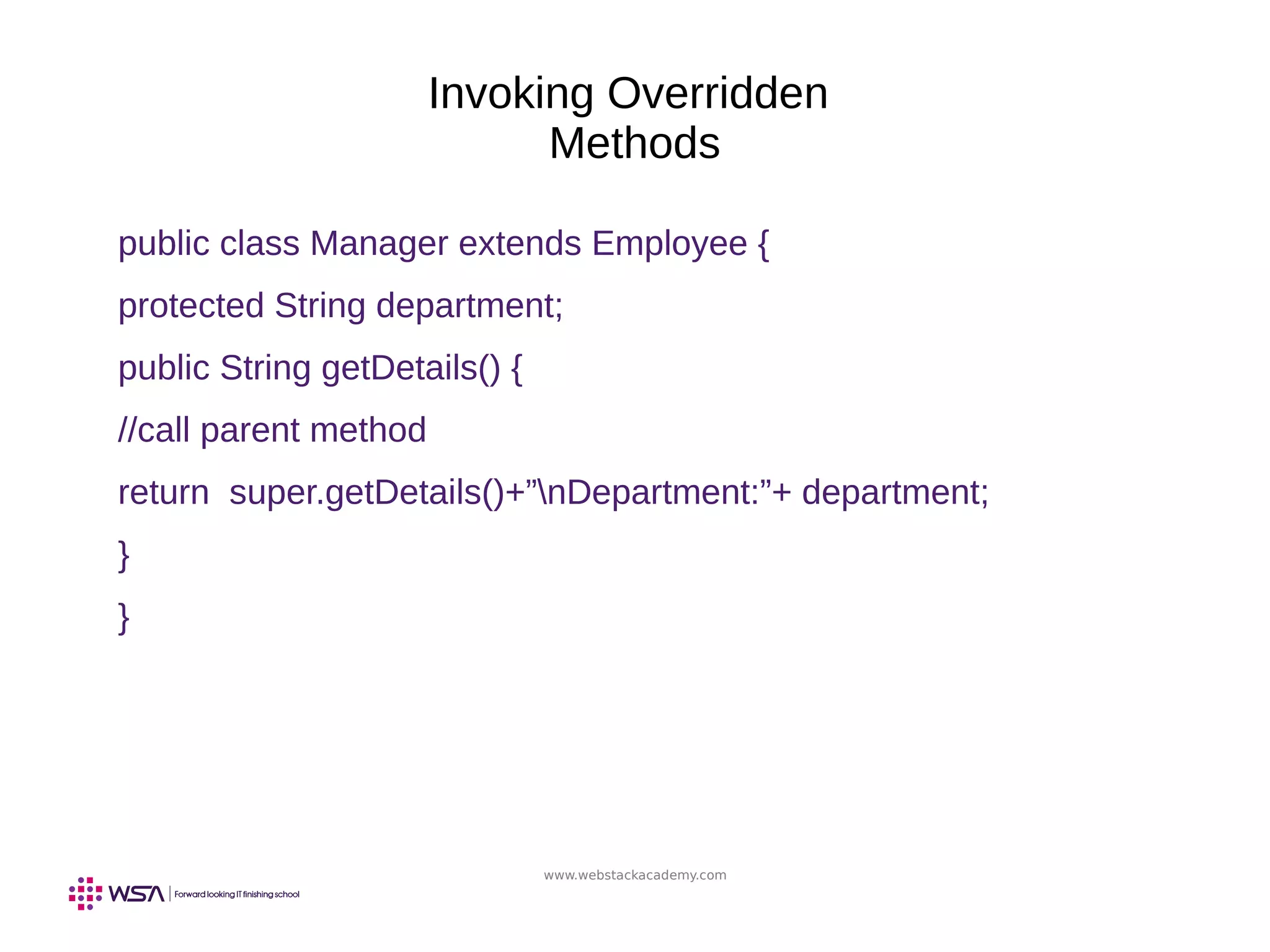


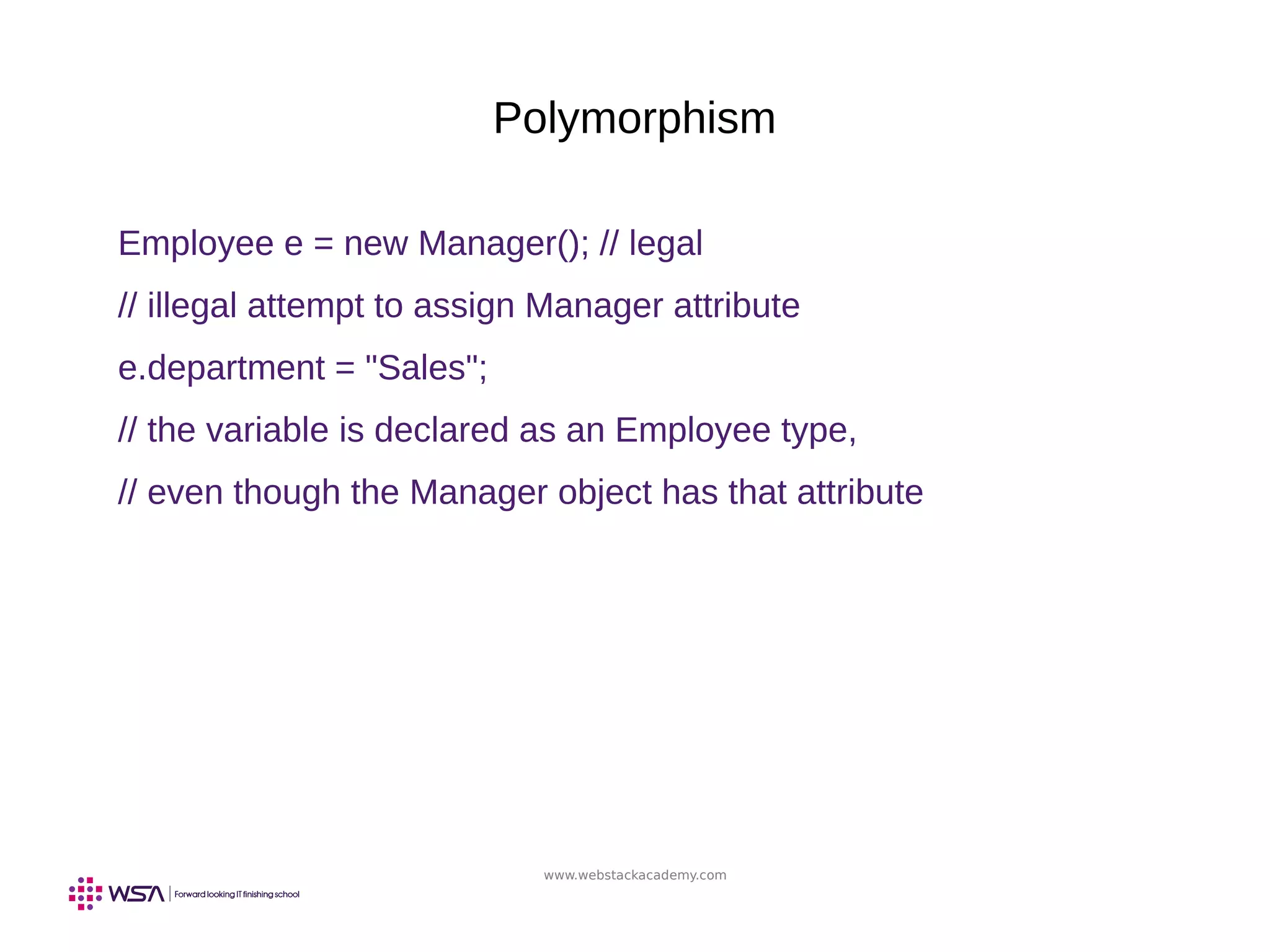

![www.webstackacademy.com
Homogeneous Collections
● Collections of objects with the same class type are called
homogeneous collections. For example:
MyDate[] dates = new MyDate[2];
dates[0] = new MyDate(22, 12, 1964);
dates[1] = new MyDate(22, 7, 1964);](https://image.slidesharecdn.com/006javaseclassdesign-190430060457/75/Core-Java-Programming-Language-JSE-Chapter-VI-Class-Design-21-2048.jpg)
![www.webstackacademy.com
Heterogeneous Collections
● Collections of objects with different class types are called
heterogeneous collections. For example:
Employee [] staff = new Employee[1024];
staff[0]= new Manager();
staff[1]= new Employee();
staff[2]= new Engineer();](https://image.slidesharecdn.com/006javaseclassdesign-190430060457/75/Core-Java-Programming-Language-JSE-Chapter-VI-Class-Design-22-2048.jpg)
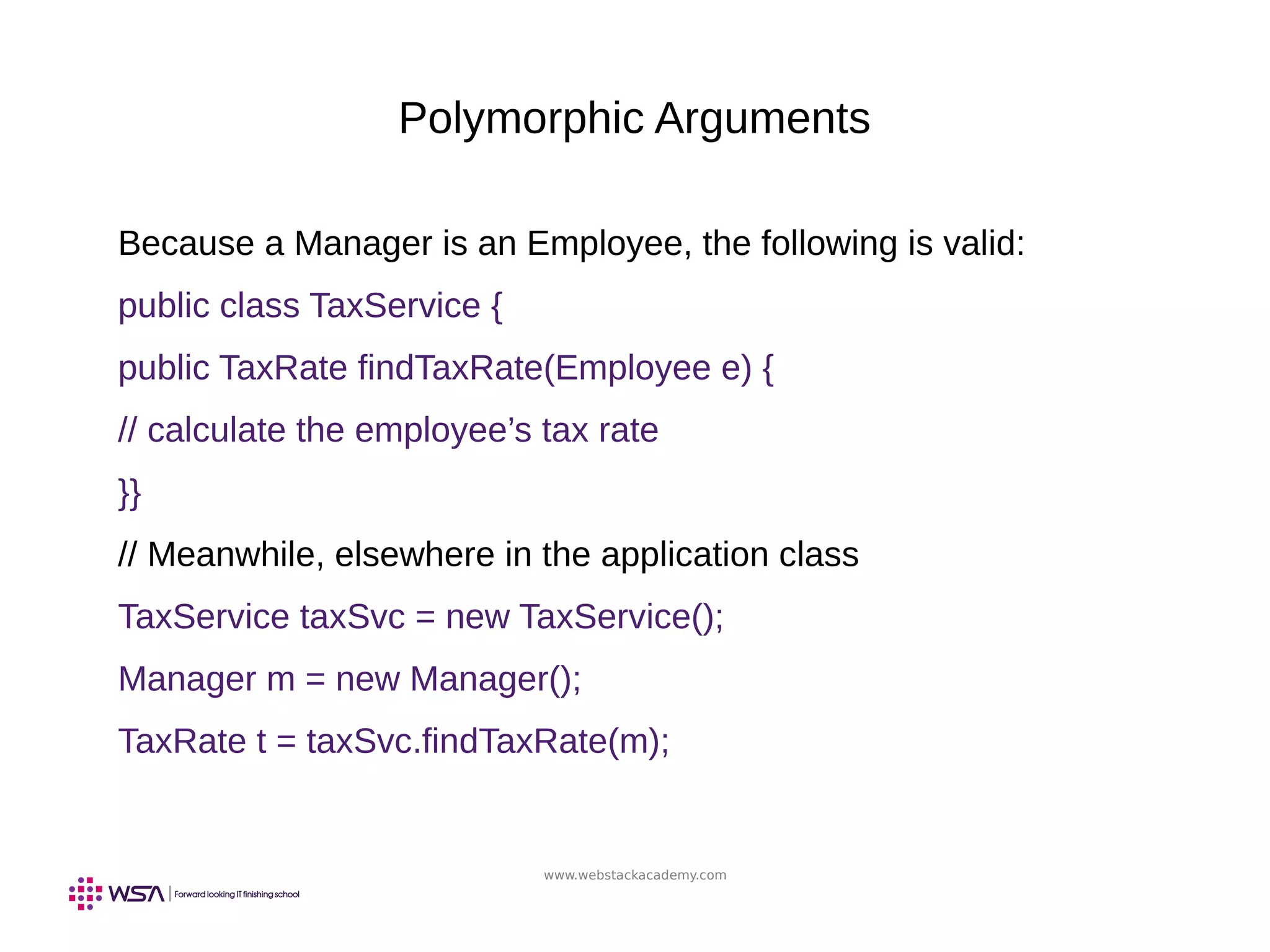

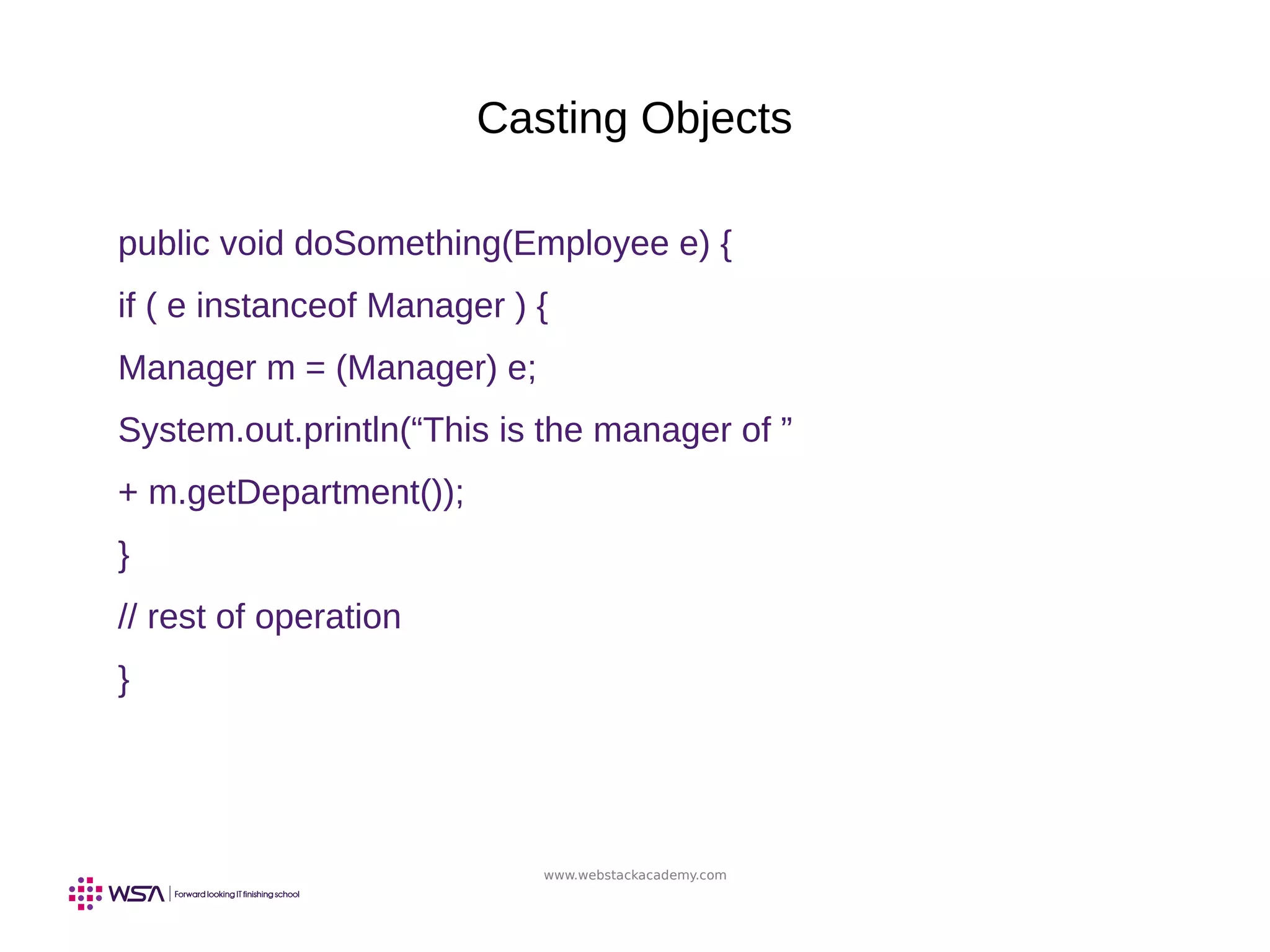
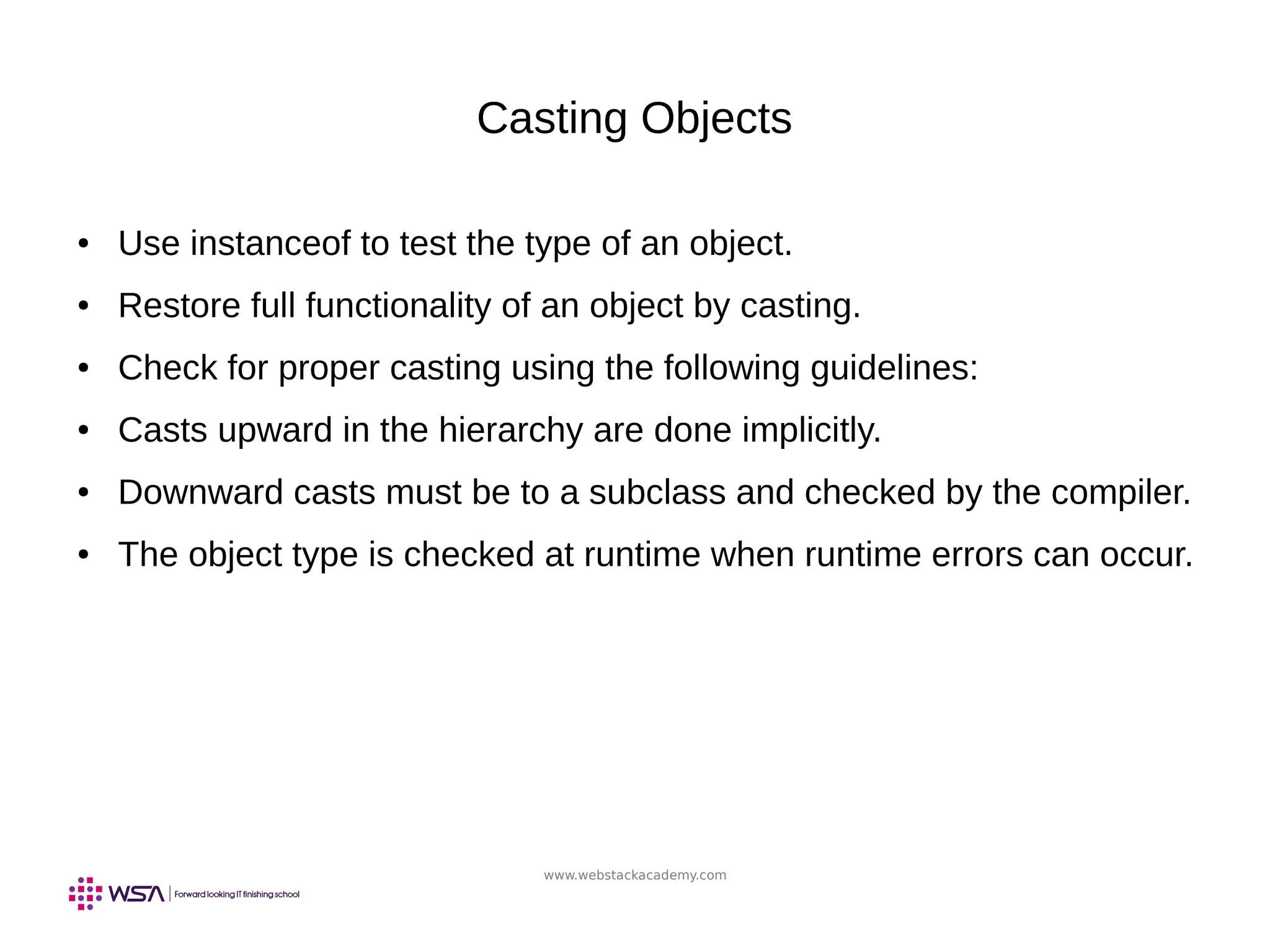


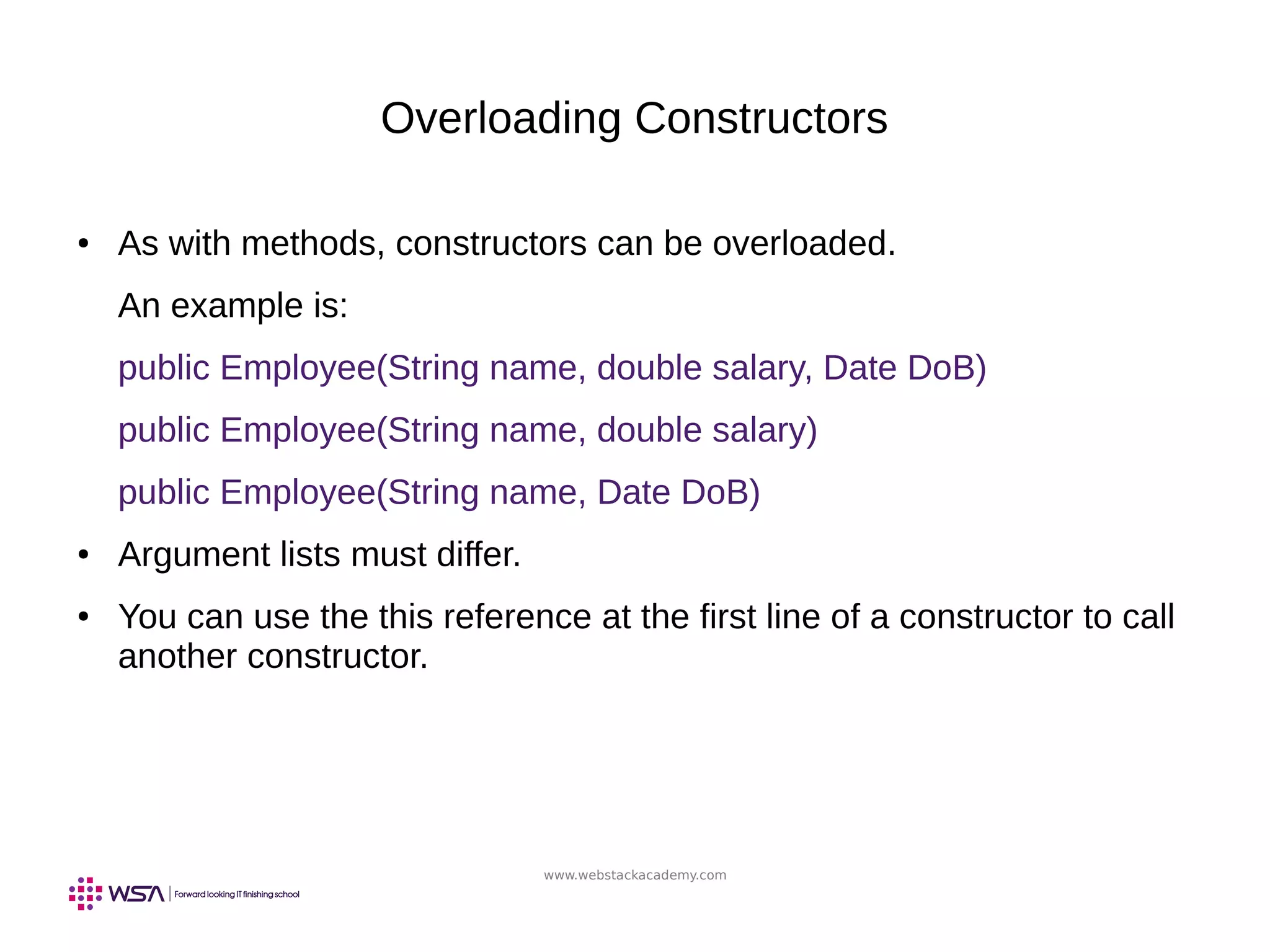

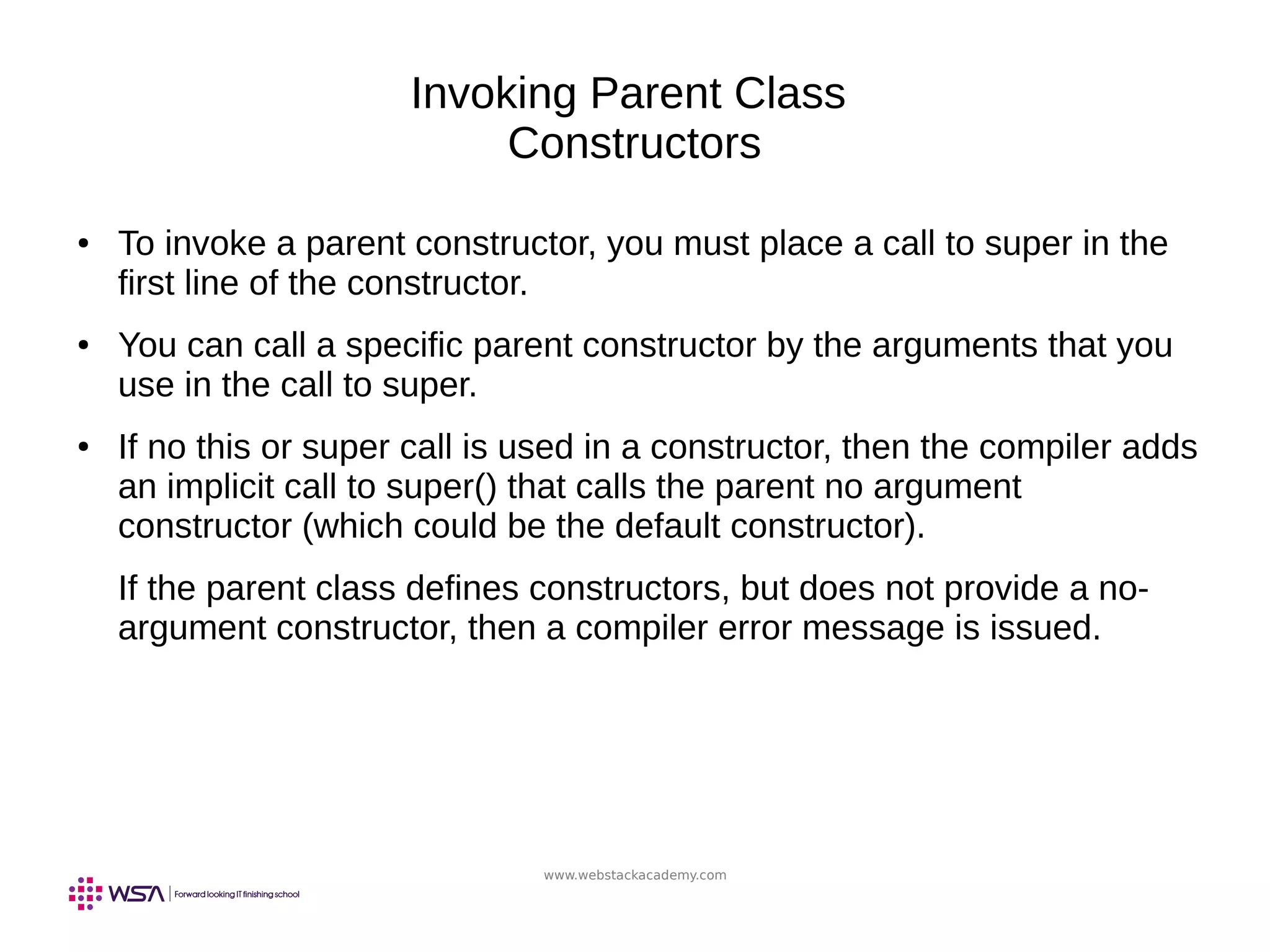
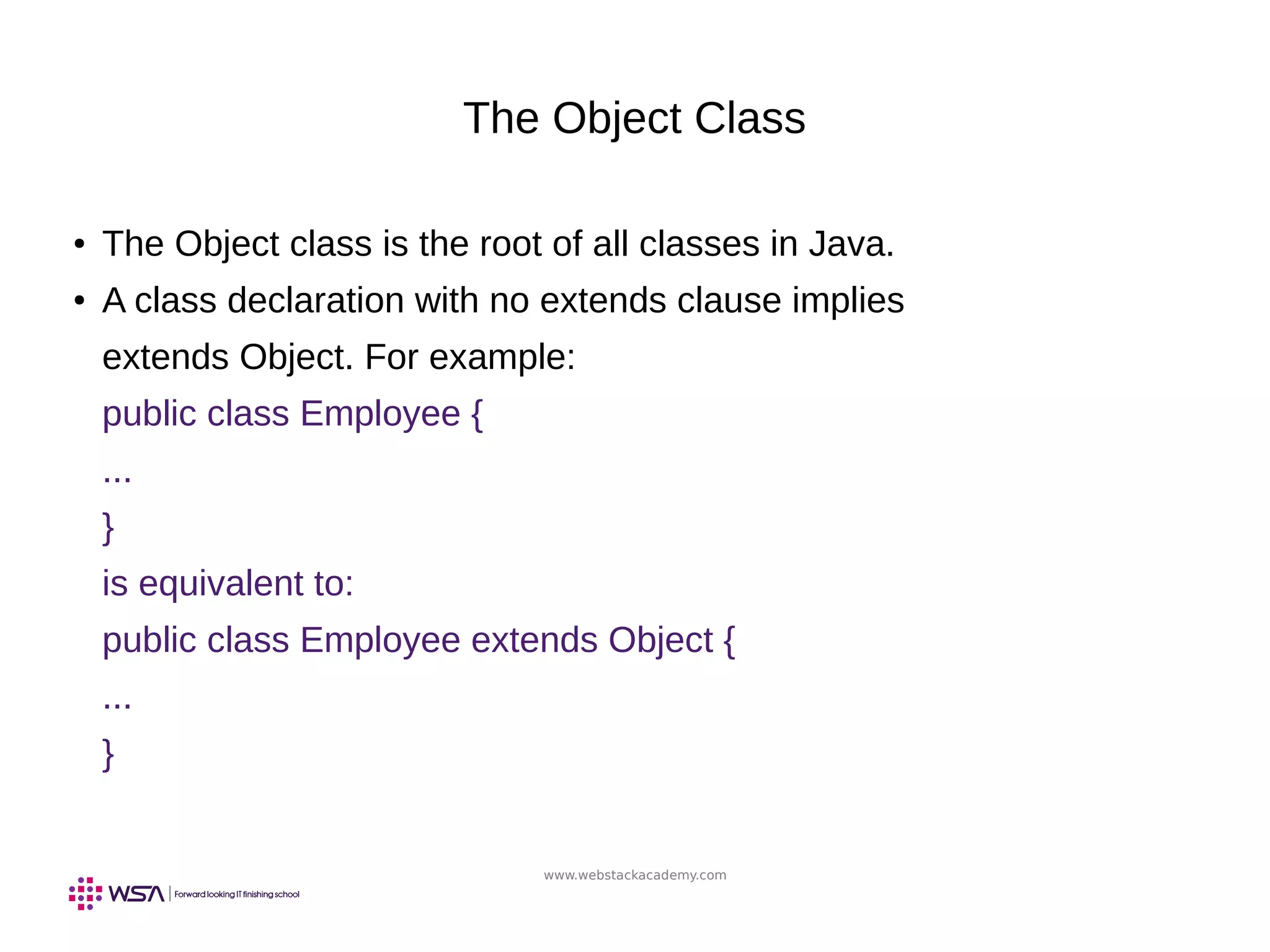


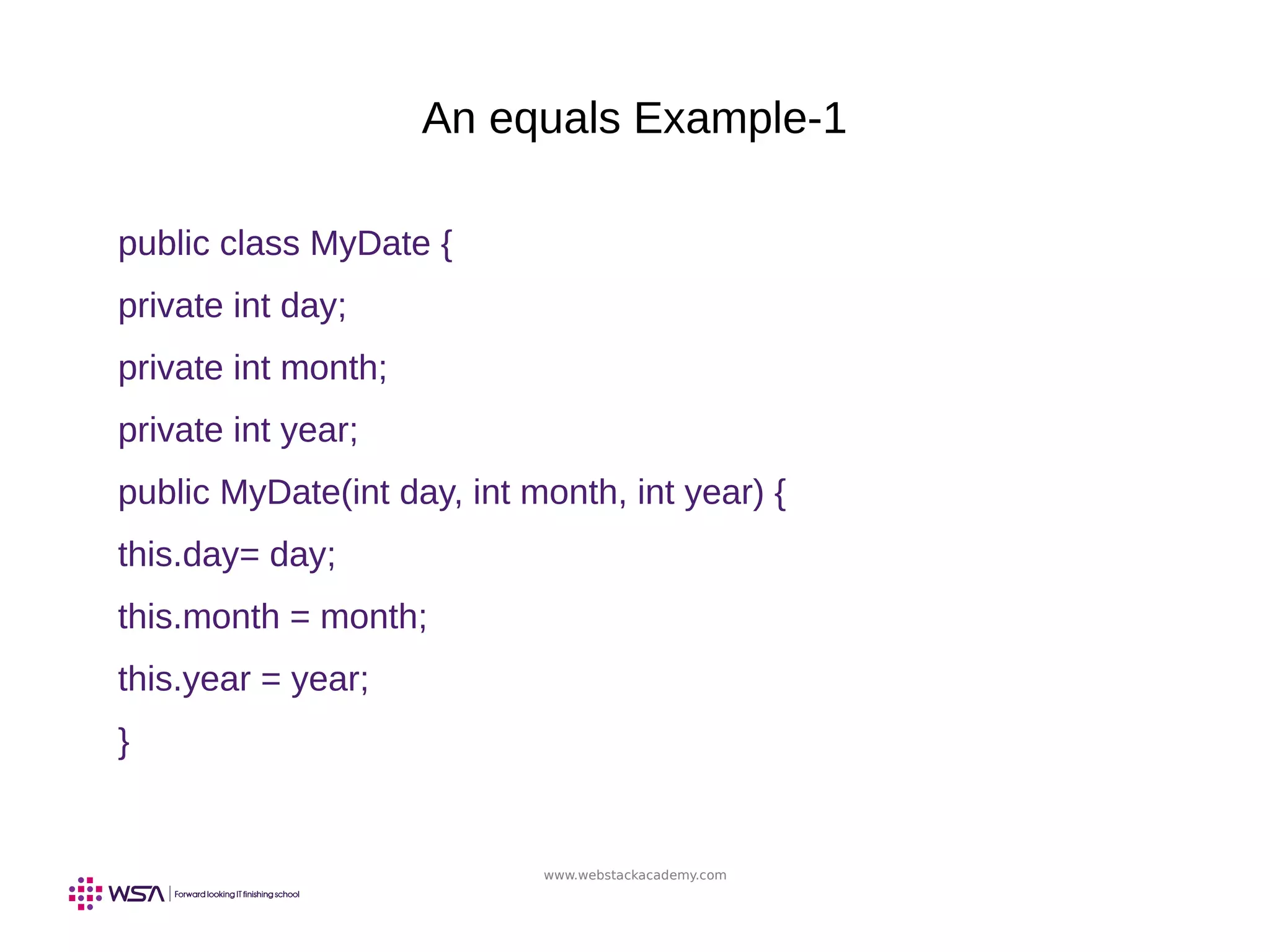

![www.webstackacademy.com
An equals Example-2
class TestEquals {
public static void main(String[] args) {
MyDate date1 = new MyDate(14, 3, 1976);
MyDate date2 = new MyDate(14, 3, 1976);
if ( date1 == date2 ) {
System.out.println("date1 is identical to date2");
} else {
System.out.println("date1 is not identical to date2");
}
if ( date1.equals(date2) ) {
System.out.println("date1 is equal to date2");
} else {
System.out.println("date1 is not equal to date2");
}](https://image.slidesharecdn.com/006javaseclassdesign-190430060457/75/Core-Java-Programming-Language-JSE-Chapter-VI-Class-Design-37-2048.jpg)
